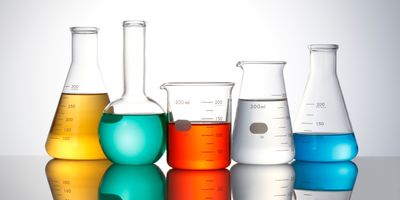The Oddities of Chemical Hygiene
Exploring the strange side of chemical hygiene, from ototoxins that can cause hearing loss to oxidizers without oxygen atoms
Chemical hygiene is a huge area that deals with many technical topics. Dense textbooks are written about it. One can’t cover much in a shorter piece like this. Instead, here are a few oddities of chemical hygiene you might not have heard before.
Can you hear me now?
Of course, noise can destroy nerve hairs in our cochlea in the inner ear. But some chemicals also destroy hearing. These ototoxins target various parts of our hearing physiology (a few include lead, mercury, carbon monoxide, styrene, and many drugs). As Helen Keller said: “Being blind separates me from things; being deaf separates me from people.” So, don’t mess with your hearing. Noise is bad enough; don’t throw fuel on the hearing-loss fire.
You might experience multiple reproductive problems
Different chemicals target various body organs. Neurotoxins, hepatotoxins, hemopoietic, and endocrine disruptors are a few. Teratogens, including ethyl alcohol, medicines/drugs, infections, and lead and mercury, affect reproduction and the developing fetus. Lead, specifically, can affect the fetus, mom’s fertility, and dad’s fertility, along with possibly causing erectile dysfunction.
When is an acid a base?
There are acids and bases, and they act differently, right? Well, sort of. Here’s one case of when they don’t:
A researcher pours one acid waste into a hazardous waste container with a very different acid. The principal investigator walks by and into his office across from the hazardous waste cabinet, and seconds later, it explodes, shattering the cabinet but mercifully not his flesh or bones.
Hazardous waste explosions often involve two acids that don’t play well together. When mixed with a much stronger acid, a mild acid can act like a base. In this case, glacial acetic acid acts as a base, and nitric acid is the much stronger acid.
Wait, an oxidizer without oxygen?!
Oxidizers provide oxygen, which facilitates fires, right? Yes, and at times, no. Odd as it seems, not all oxidizers have oxygen atoms. The group VIIA halogens, especially fluorine, are all oxidizers. Fluorine will react with anything it can, so keep it away from flammables or combustibles.
Don’t touch it! Call the bomb squad
Here was the candidate interview question asked by a chemistry professor on our committee:
“You walk into a lab and spot a round-bottomed flask with a solid material in it. What do you do?”
Our candidates struggled to get it correct enough to satisfy the chemistry professor (and the committee). Picric acid, ethers, and peroxide formers are a few examples. In safety, often the don’ts are more critical than the dos. High-energy materials might explode when solid or crystalized (but safe when in an aqueous state).
Don’t forget . . .
Chemical hygiene has some odd aspects or properties. Not everyone knows these, but they should. So, add them to your lab safety training. Know not only the basics but also the weird stuff. It might make a difference in someone’s safety, health, or life.
Embark on an educational journey in lab safety with the Lab Safety Management Certificate program from Lab Manager Academy. Practicing good chemical hygiene is vital, so we're here to help you every step of the way. Our program empowers you to foster an effective safety culture, mitigate risks, and become a lab safety leader. Discover more about the Lab Safety Management Certificate program here.


